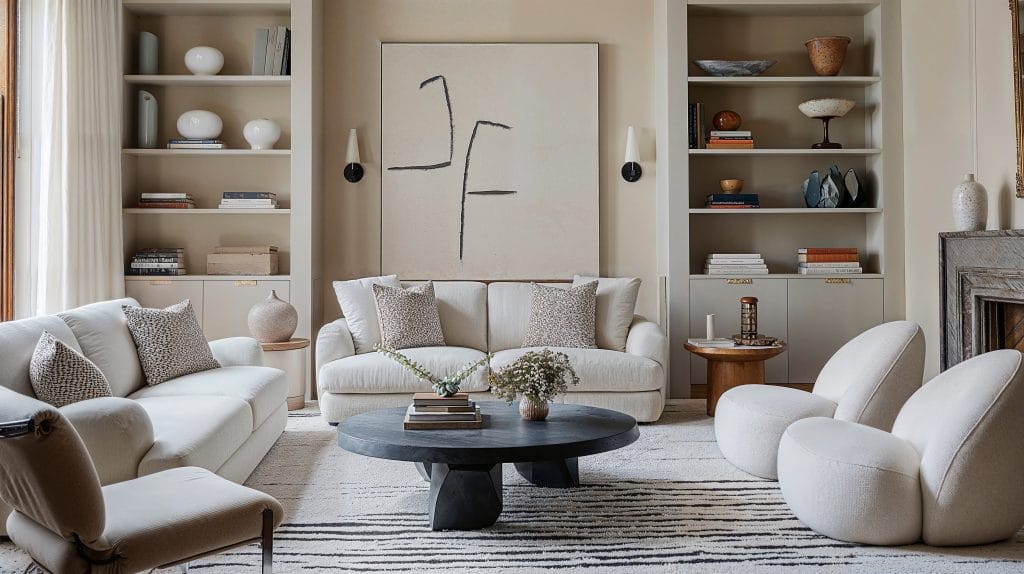Trusted Architecture Firm specializing in modern structures.
Trusted Architecture Firm specializing in modern structures.
Blog Article
Change Your Home With Essential Principles of Interior Decoration and Looks
By understanding the impact of shade theory and the significance of structure and patterns, one can produce spaces that are not just visually appealing yet additionally deeply personal. Attaining this balance involves even more than simple design; it includes a tactical setup and a keen understanding of how each component communicates within an area.
Comprehending Shade Theory
Comprehending the principles of shade concept allows developers to create areas that reverberate emotionally with residents while meeting practical requirements. Each classification plays a crucial function in developing consistency within a space.
The mental effect of colors is profound; cozy tones such as reds and oranges evoke power and warmth, while trendy tones like blues and greens promote calmness and harmony. Moreover, using complementary colors enhances visual rate of interest, developing striking contrasts that can boost a space's allure.
Neutral colors, on the other hand, work as a functional backdrop, allowing other design elements to shine. It is vital to think about aspects such as lights and the space's function when choosing a color palette, as these can change the understanding of colors throughout the day.
Ultimately, a well-considered color design can transform a space, fostering a feeling of convenience and design that straightens with the residents' preferences. Mastery of color concept is, consequently, an essential ability for any interior developer intending to produce harmonious and inviting environments.
Accomplishing Balance in Design
Just how can developers accomplish a sense of stability in their rooms? Accomplishing balance in design is basic to producing harmonious insides. Designers can utilize 3 main types of equilibrium: in proportion, unbalanced, and radial. In proportion balance entails setting up elements equally around a central factor, promoting a sense of order and peace. This type often includes sets of furniture or artwork, improving visual stability.
Unbalanced equilibrium, on the various other hand, relies upon varying elements that still attain a cohesive appearance. This technique permits even more dynamic and casual arrangements, supplying interest while preserving equilibrium. By meticulously choosing differing sizes, colors, and appearances, designers can develop an aesthetically compelling room that really feels balanced yet energised.
Radial equilibrium stresses a central focal point with components radiating outside. This design is frequently seen in circular formats, where furnishings and design produce a natural border that attracts the eye inward.
Eventually, attaining equilibrium requires thoughtful consideration of scale, percentage, and the partnerships between elements. luxury interior design. By skillfully using these balance principles, designers can transform areas right into atmospheres that really feel both aesthetically pleasing and functionally harmonious, enhancing the overall experience for residents
Value of Spatial Understanding

A keen sense of spatial understanding enables developers to determine centerpieces within an area, leading the viewer's attention to essential functions while maintaining a general feeling of unity. It additionally assists in the critical positioning of lights, which can significantly influence the perception of space and mood. Recognizing spatial connections allows the designer to provide to the details requirements of occupants, guaranteeing that each area offers its desired purpose without compromising aesthetics.
Inevitably, spatial recognition is important for optimizing the capacity of any interior official source area. By thoroughly considering the interaction between measurements, design, and function, designers can develop atmospheres that not just satisfy practical needs however also stimulate a sense of convenience and charm, improving the general living experience.
Incorporating Structure and Patterns
Embracing a varied variety of appearances and patterns can substantially boost the visual and responsive charm of an indoor space. The critical use of various products-- such as timber, metal, material, and rock-- produces deepness and interest, making a space really feel a lot more welcoming and dynamic. Incorporating smooth surfaces with rough appearances can establish a balance that attracts the eye and involves the senses.
When incorporating patterns, take into consideration both scale and repetition. Big patterns can act as prime focus, while smaller, subtle styles can enhance other aspects without frustrating the room. Layering patterns, such as pairing floral cushions with striped throws, includes intricacy and a feeling of harmony if performed attentively.
It is also important to preserve a cohesive color palette, guaranteeing that structures and patterns interact rather than compete for focus. By picking a few key textures and patterns, you can develop a linked visual that shows your personal design while boosting the total setting of the space. Ultimately, the careful unification of these aspects can transform an ordinary room into a sophisticated environment abundant with personality and heat.
Personalizing Your Room
Producing a space that reflects your individuality is important to achieving a really inviting setting. Customization in indoor design permits you to infuse your unique design and rate of interests right into your home, transforming it from a mere sanctuary into a refuge that talks to that you are. Begin by choosing a color palette that resonates with your emotions-- strong hues can invigorate, while soft tones provide tranquility.
Include artwork and decoration that reflect your interests, whether it be travel, nature, or abstract principles. Displaying personal collections, such as publications, photos, or keepsakes, can evoke treasured memories and create focal factors within an area. Additionally, think about customizing practical items, like upholstered furniture, to line up with your visual choices.

Conclusion
To conclude, the makeover of a home through the necessary concepts of interior decoration and aesthetics requires a detailed understanding of color theory, balance, spatial understanding, appearance, and personalization. Each element contributes considerably to developing an unified and functional living environment - luxury interior design. By view website thoughtfully integrating these principles, people can enhance the aesthetic charm and emotional resonance of their areas, inevitably Your Domain Name cultivating a home that shows one-of-a-kind identifications while giving convenience and practicality
Report this page